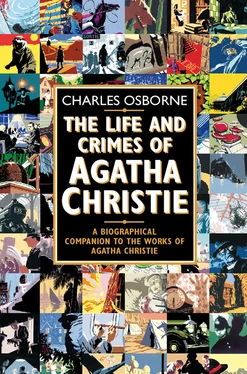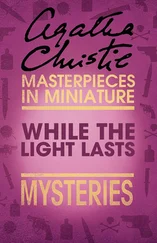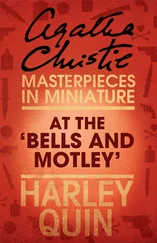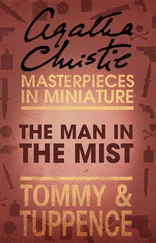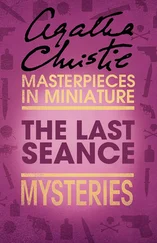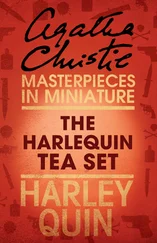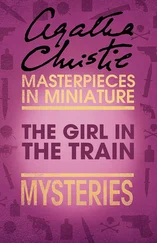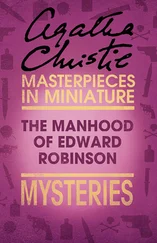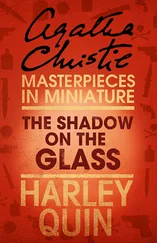It was a large, dreary hotel with plenty of rooms. There were few people staying there. I don’t think I spoke to any of them – it would have taken my mind away from what I was doing. I used to write laboriously all morning till my hand ached. Then I would have lunch, reading a book. Afterwards I would go out for a good walk on the moor, perhaps for a couple of hours. I think I learned to love the moor in those days. I loved the tors and the heather and all the wild part of it away from the roads. Everybody who went there – and of course there were not many in wartime – would be clustering around Hay Tor itself, but I left Hay Tor severely alone and struck out on my own across country. As I walked, I muttered to myself, enacting the chapter that I was next going to write; speaking as John to Mary, and as Mary to John; as Evelyn to her employer, and so on. I became quite excited by this. I would come home, have dinner, fall into bed and sleep for about twelve hours. Then I would get up and write passionately again all morning.
When Archie Christie came home on leave, he read his wife’s novel and enjoyed it. A friend of his in the Air Force was a director of a publishing house, and Archie suggested that he should provide her with a letter from his friend which she could enclose with the typescript and send off to Methuen’s. This plan was duly followed but, although Methuen’s sat on the typescript for about six months, perhaps to prove to Archie’s friend that they were giving it their most earnest consideration, they eventually concluded that it was not quite suitable for them, and returned it to its author.
The Mysterious Affair at Styles was submitted to another publisher, again without success, after which Agatha decided to try The Bodley Head, having noticed that they had recently published one or two detective novels. She packed the manuscript off to them, heard nothing, and forgot all about it.
Towards the end of the war, Archie Christie, now a Colonel, was posted to the Air Ministry in London, so Agatha was able to leave Torquay and live at last with her husband. They took a small flat in St John’s Wood, at 5 Northwick Terrace, which was really no more than two rooms on the second floor of a house (now demolished), and Agatha started a course of book-keeping and shorthand to occupy her days. The war came to an end, and a few months later, in 1919, Mrs Christie gave birth to a daughter, Rosalind, at Ashfield, the family home in Torquay.
The Christies now needed a larger London flat, and in due course found what they were looking for on the fourth floor of Addison Mansions (Flat 96), a huge double apartment block behind Olympia in Earls Court. Archie was demobilized, and went to work for a firm in the City. It was towards the end of 1919, nearly two years after she had sent the typescript of The Mysterious Affair at Styles to The Bodley Head, that Agatha Christie received a letter from John Lane, the Managing Director of the publishing house, asking her to call and see him. When they met, John Lane explained that several people had read her novel and thought it showed promise. However, the dénouement, which she had written as a court-room scene, did not ring true. If Mrs Christie would rewrite that chapter, in a different setting, and make some other minor changes, The Bodley Head would be willing to publish her book.
After explaining what a risk he was taking by offering to publish a new and unknown writer, and how little money he was likely to make with her novel, John Lane produced a contract from the drawer of his desk, and an excited young author who had given up hope of ever having anything published, other than the occasional story or poem, immediately signed it. She was to receive a small royalty, but only after the first 2,000 copies had been sold. All subsidiary rights, such as serialization and film rights, would be shared fifty-fifty between author and publisher, and there was a clause binding the author to offer The Bodley Head her next five novels, at an only slightly increased royalty rate. A jubilant Agatha rushed home to inform her husband of her good fortune, and that evening they celebrated at the Hammersmith Palais de Danse.
When The Mysterious Affair at Styles was published in 1920, it sold nearly 2,000 copies. The £25 which Agatha Christie earned from her first book came, not from royalties, for there were none due to her under the terms of a distinctly unfair contract, but from a half share of the serial rights which had been sold for £50 to The Weekly Times. Taking the view that £25 was not a very satisfactory return for all the time and energy she had expended upon the writing of her novel, Agatha did not envisage ever attempting to write another. At least, this is what she was to claim, years later, in her autobiography. She had been dared by her sister to write a detective story, she had done so, and she had got it published. There, as far as she was concerned, the matter ended. She would probably write stories from time to time, but she had no intention of turning herself into a professional writer. To her, writing was fun.
In this, as in one or two other matters, Agatha Christie’s An Autobiography is less than completely reliable. Writing it over a number of years between 1950 and 1965, she did not always remember with accuracy events which had taken place thirty or forty years earlier. In fact, in a letter to Basil Willett of The Bodley Head, written in the autumn of 1920, she inquired about the publication date of The Mysterious Affair at Styles, adding that she was beginning to wonder if it was ever going to appear, as she had already nearly finished a second novel, The Secret Adversary. She also wanted to know what the cover of The Mysterious Affair at Styles would look like. After she had seen the cover design, she agreed that it would do as it was ‘quite artistic and mysterious’. She also asked that a dedication, ‘To my mother’, should appear at the beginning of the book.
Most of the qualities which were to make Agatha Christie the most popular crime writer there has ever been were already on display in The Mysterious Affair at Styles, and it is astonishing that several publishers turned the novel down before it was accepted by The Bodley Head. Characterization is no more detailed than Agatha Christie needed it to be for her purpose, the setting is an English country house in or near a small village, there is a proliferation of clues which are there for the reader to discover, if he is not dazzled by the author’s sleight of hand, and the method used by the murderer is poisoning.
The young Agatha Christie had learned a great deal about poisons through her work at the hospital dispensary in Torquay, and she was to put her knowledge to good use in several of her murder mysteries. Among the many favourable reviews her excellent first novel received, Agatha was especially proud of that in the Pharmaceutical Journal, which praised ‘this detective story for dealing with poisons in a knowledgeable way, and not with the nonsense about untraceable substances that so often happens. Miss Agatha Christie knows her job.’
The ‘Styles’ of the title is Styles Court, a country house in Essex, a mile outside the village of Styles St Mary. In later novels, Mrs Christie tended not to specify the county, and even in this first novel she avoids using real names of towns. Characters may take the train up to London from the country, but if they have to visit a nearby country town it will not be identified as Chelmsford or Colchester, but will be given a fictitious name. The fictitious village of Styles St Mary is, for instance, seven miles away from the fictitious town of Tadminster, where one of the characters works in the dispensary of the Red Cross Hospital.
Читать дальше
